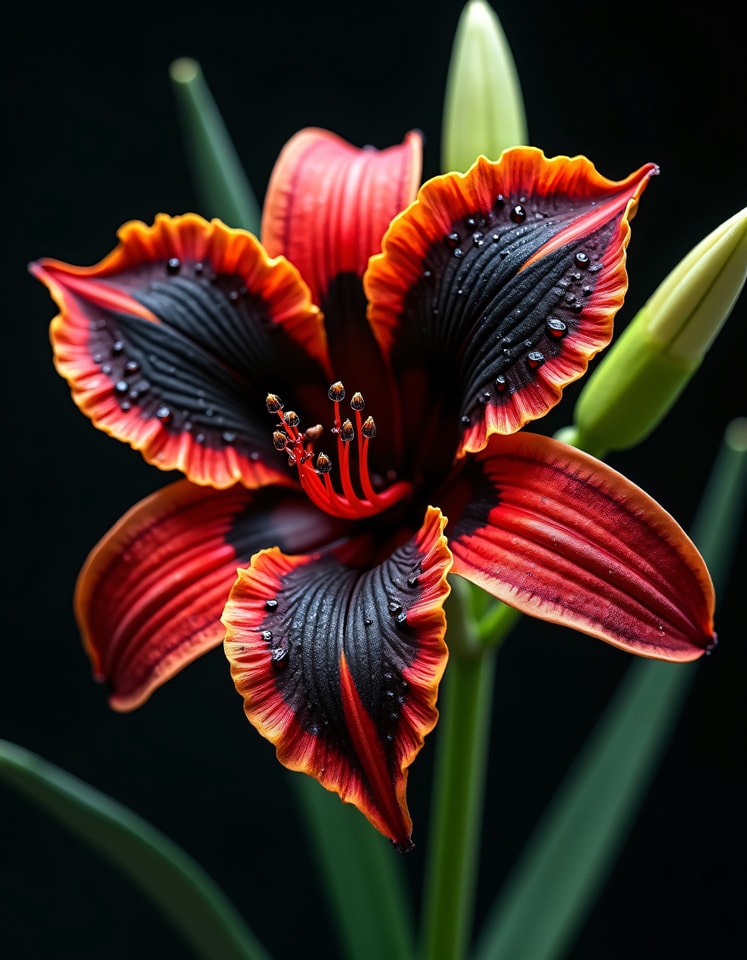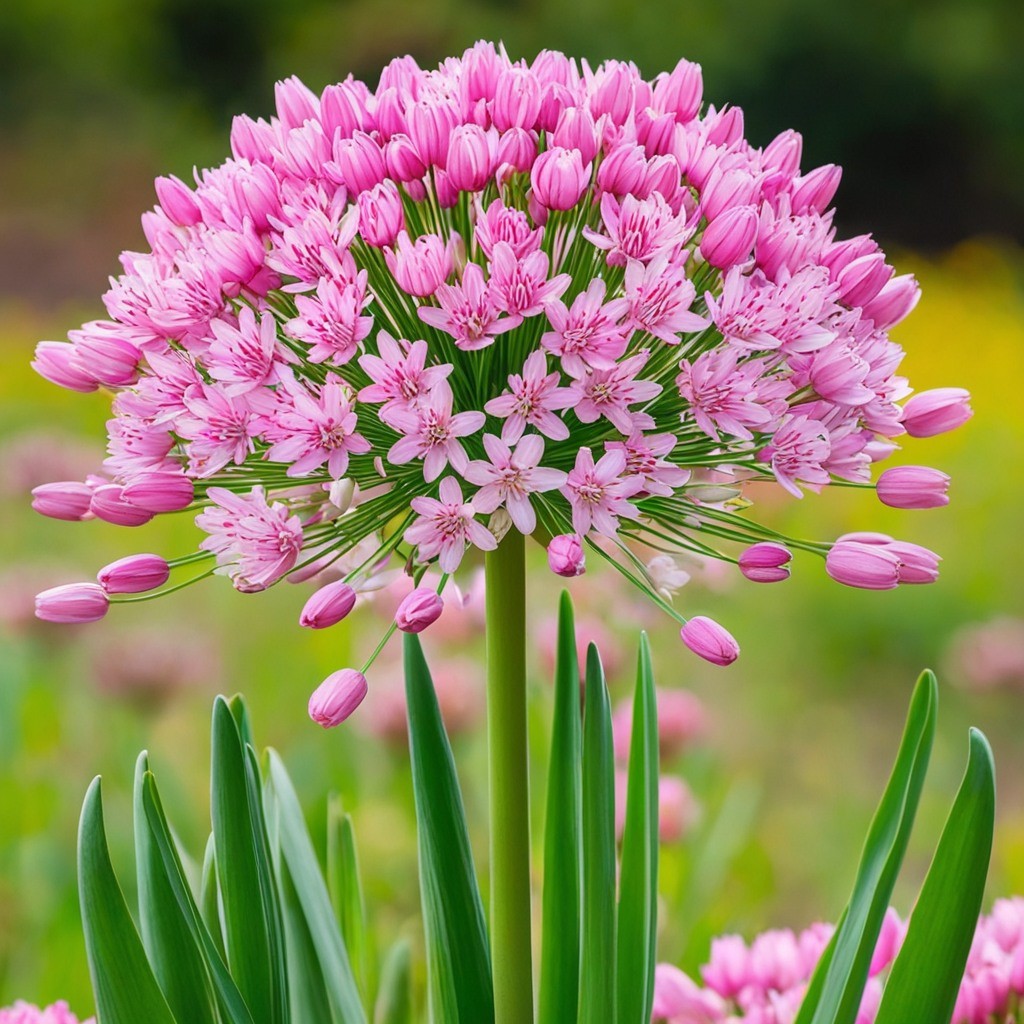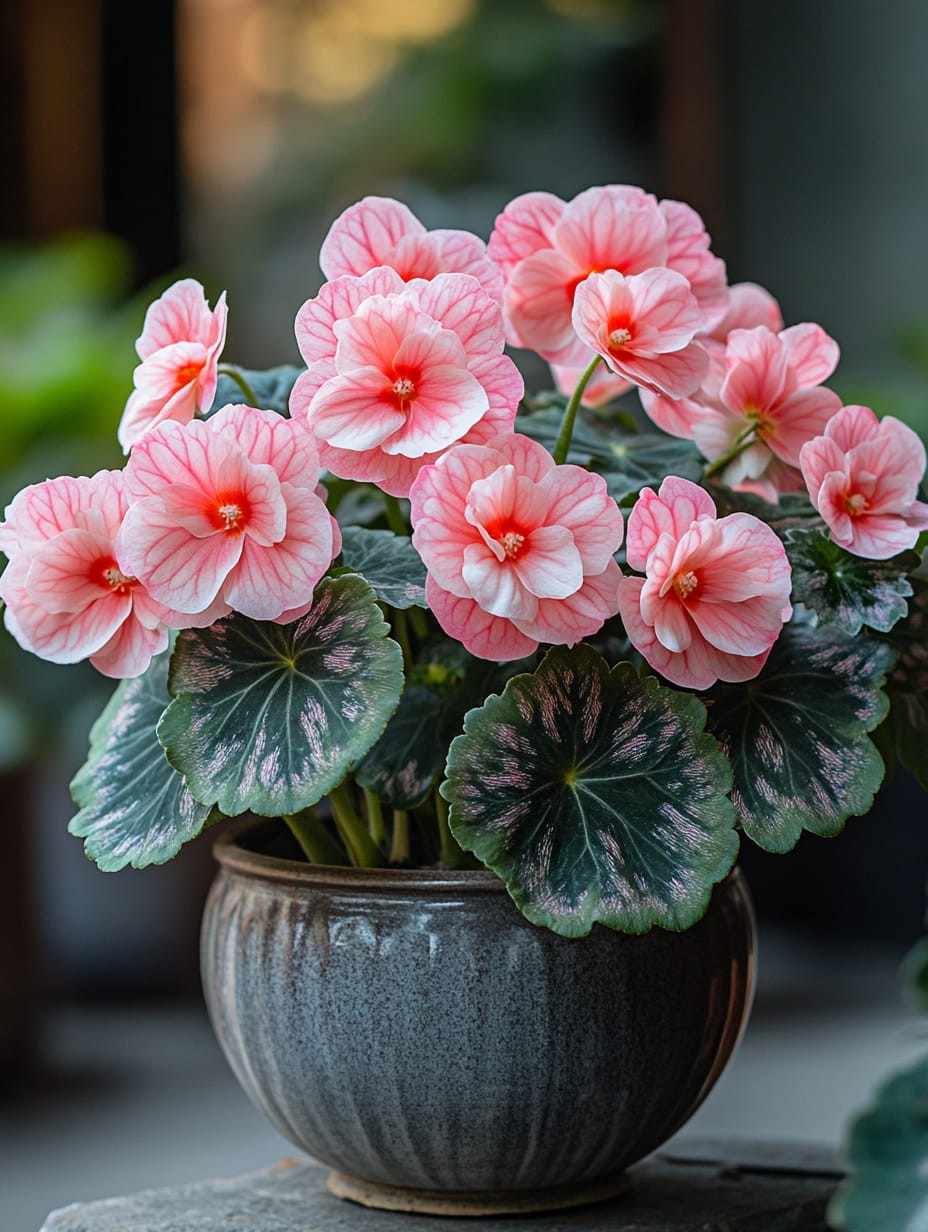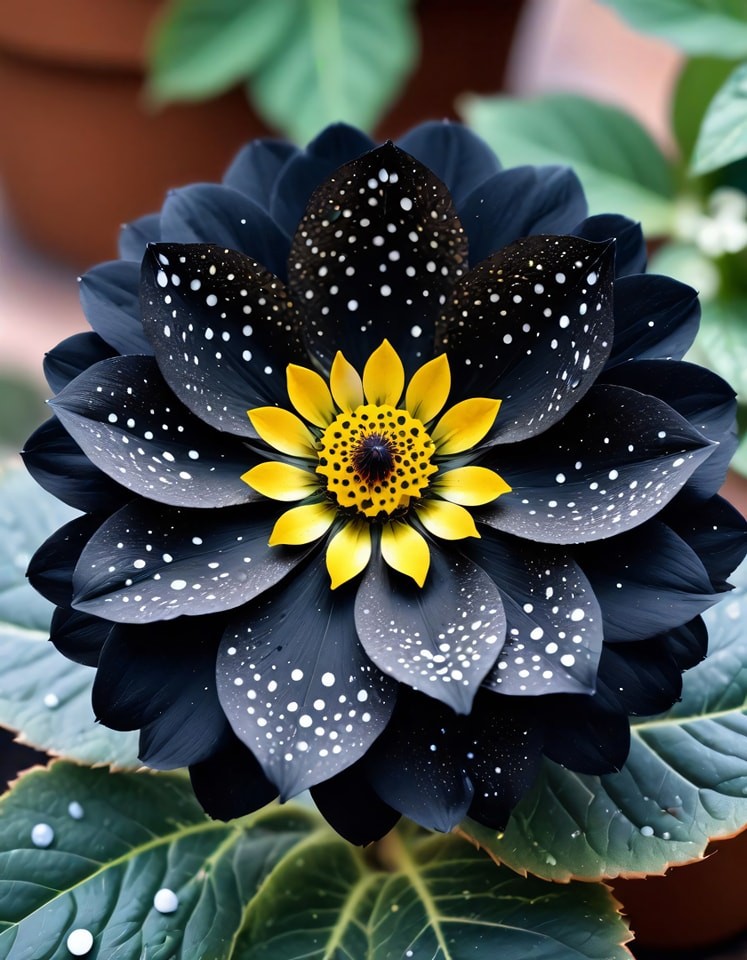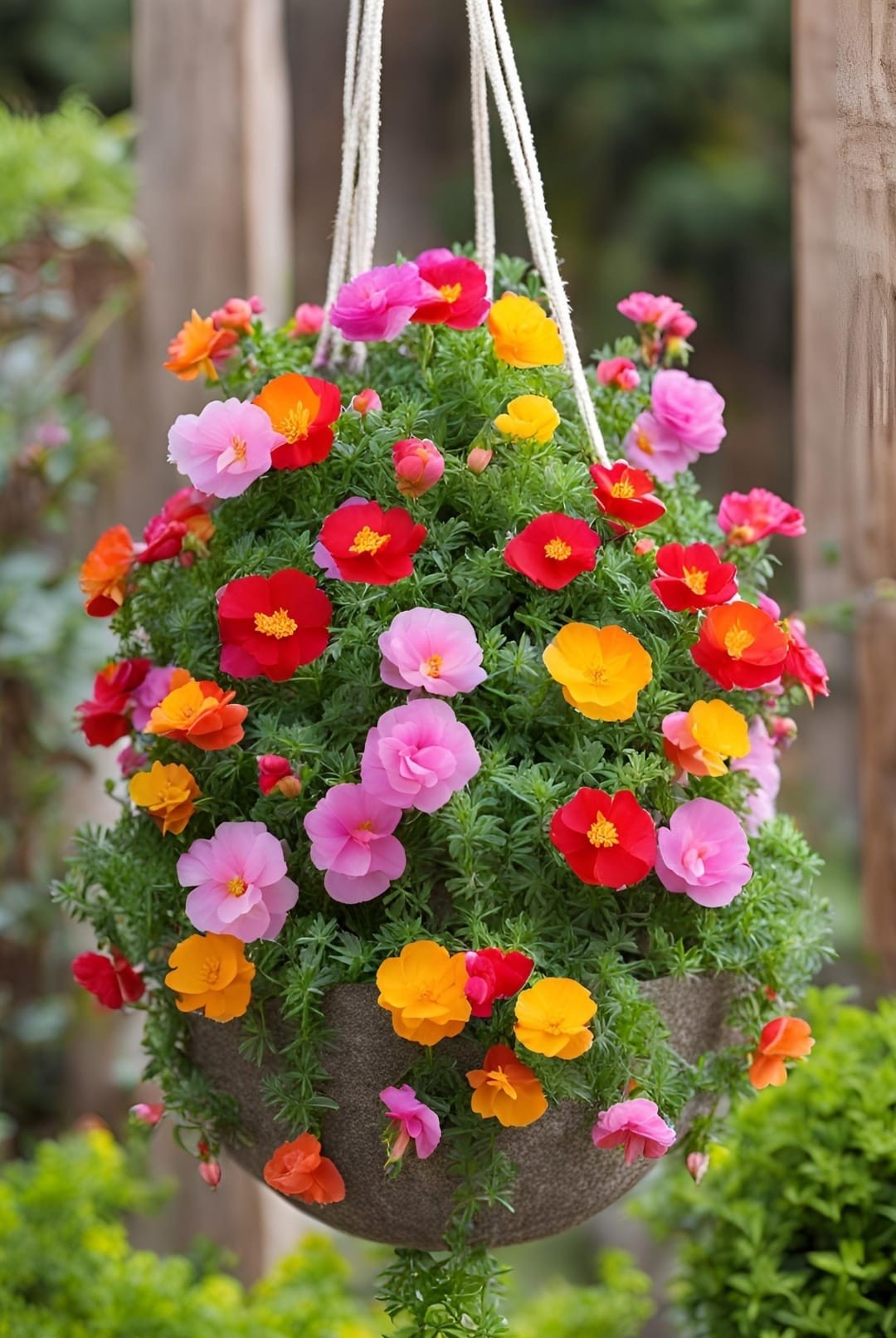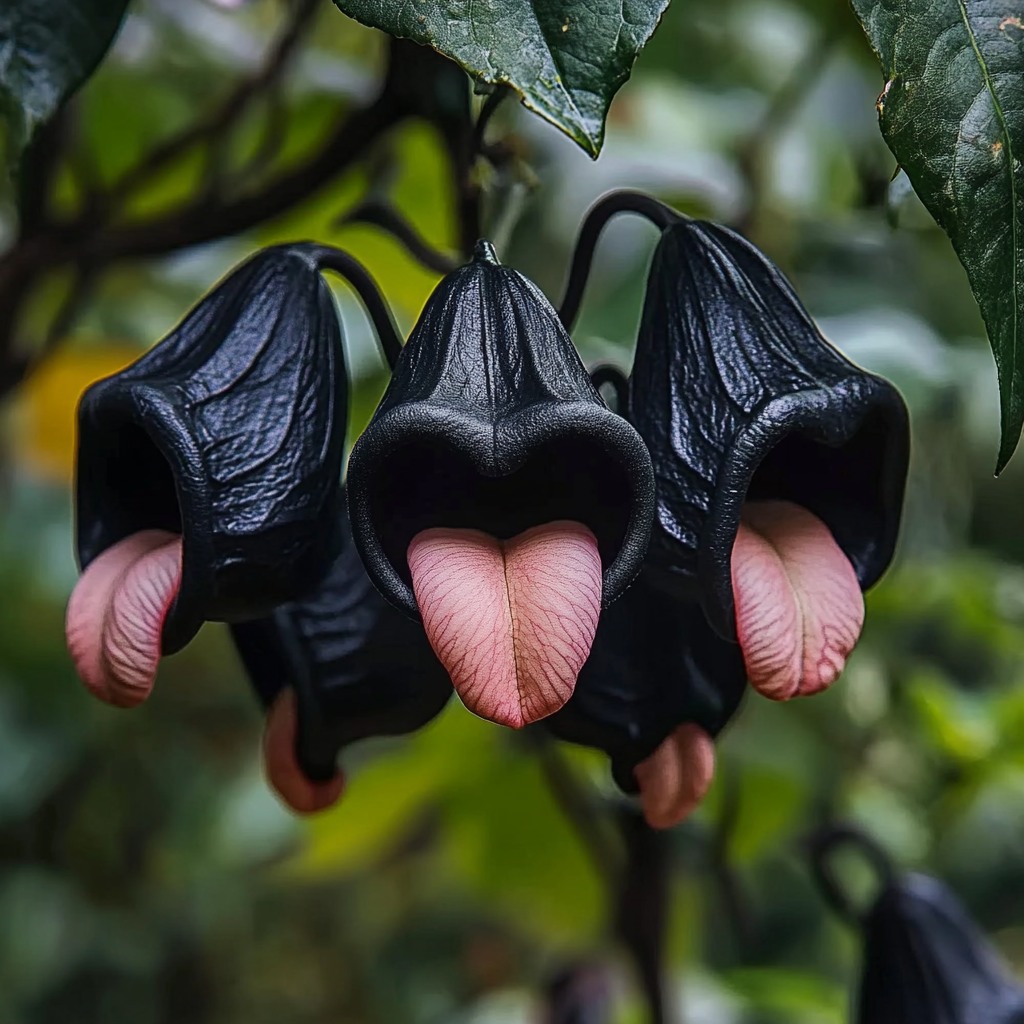
Black Bat Flower (Tacca chantrieri)A mysterious plant with striking black bracts and whisker-like filaments, resembling eerie bat faces hanging in the jungle!Light: Bright, indirect.Water: Keep soil consistently moist, but not waterlogged.Soil: Well-draining, rich in organic matter.Temp: 70-80°F (21-27°C).Humidity: High, 60-80%.Fertilizer: Monthly, diluted balanced fertilizer during the growing season.A truly unique and spooky addition to your plant collection!
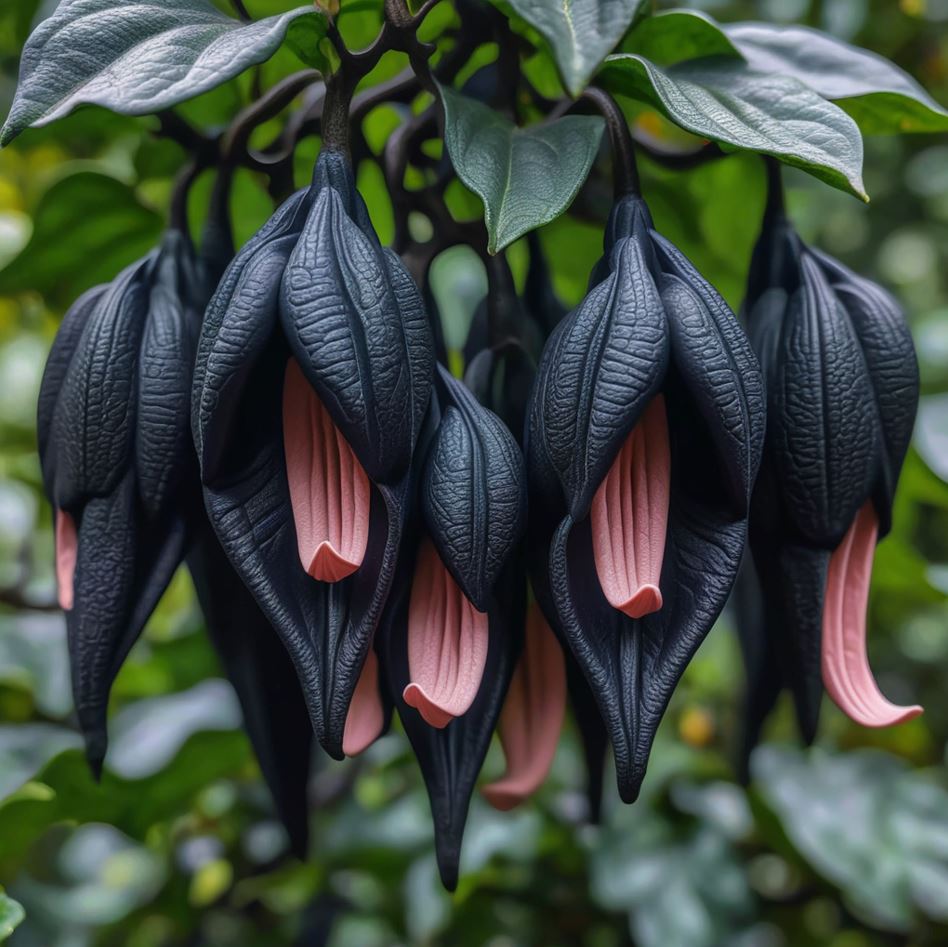
In the realm of botanical wonders, few plants captivate the imagination quite like the Black Bat Flower (Tacca chantrieri). This enigmatic species, with its dark, dramatic blooms reminiscent of a bat in flight, stands as a testament to nature’s capacity for the extraordinary. Native to the tropical forests of Southeast Asia, the Black Bat Flower has long been shrouded in mystery, its unique appearance inspiring both awe and superstition. As we delve into the world of this remarkable plant, we’ll explore its fascinating characteristics, cultural significance, and the challenges it faces in an ever-changing world.
The Wings of Night: Bracts and Their Function
At first glance, the most striking feature of the Black Bat Flower is undoubtedly its large, wing-like structures. These are not petals, as one might assume, but specialized leaves called bracts. Typically reaching up to 12 inches in length, these bracts are a deep, velvety purple-black, often described as having the texture of fine suede. Their dramatic coloration and size serve multiple purposes:
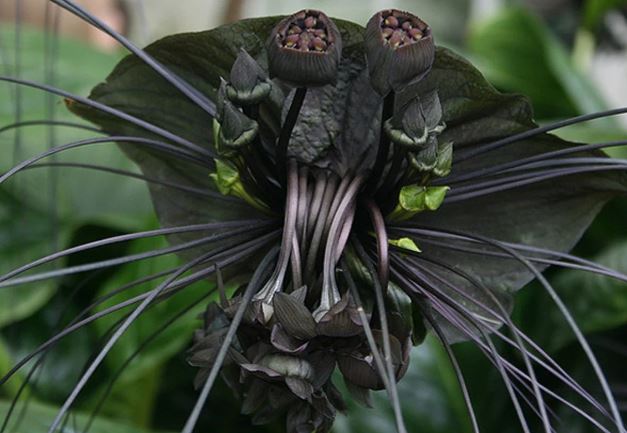
- Attraction: The dark, prominent bracts act as a beacon for pollinators, particularly in the low-light conditions of the forest understory where the plant typically grows.
- Protection: The bracts shield the actual flowers from physical damage and help regulate temperature and humidity around the delicate reproductive structures.
- Mimicry: Some researchers speculate that the bat-like appearance may serve as a form of protective mimicry, potentially deterring herbivores who might mistake the plant for a roosting bat.
The bracts’ texture is not just for show – the fine, velvety surface is believed to help in capturing and reflecting what little light is available in its shaded habitat, maximizing the plant’s ability to photosynthesize in low-light conditions.
The Heart of Darkness: True Flowers and Reproductive Structures
Nestled within the protective embrace of the bracts lie the true flowers of Tacca chantrieri. These small, inconspicuous blooms are arranged in clusters of 15-25 flowers, each no larger than a fingernail. Despite their size, these flowers are complex structures:
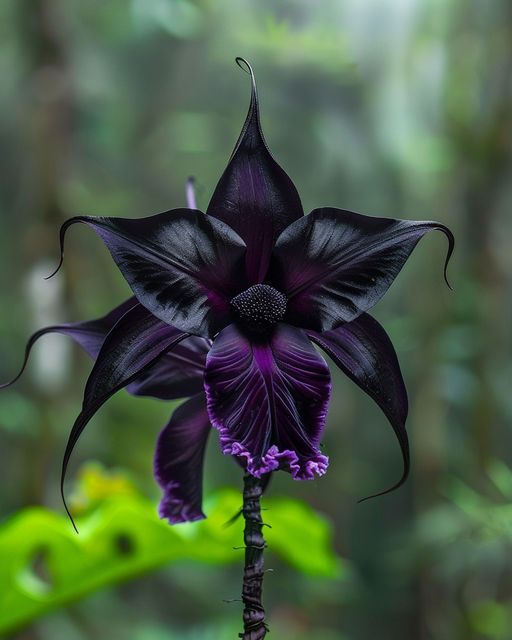
- Color: The flowers range from deep purple to nearly black, contributing to the plant’s overall gothic aesthetic.
- Structure: Each flower has six tepals (petal-like structures), six stamens, and an inferior ovary.
- Whiskers: Perhaps the most intriguing feature of the true flowers are the long, whisker-like filaments that extend from the flower cluster. These filaments, which can reach up to 28 inches in length, are believed to play a role in pollination, possibly by providing a “landing strip” for flying insects.
The reproductive process of the Black Bat Flower is still not fully understood. While self-pollination is possible, cross-pollination is believed to be the primary method, with small flies and gnats serving as the main pollinators.
Leaves and Stem: The Supporting Cast
While the inflorescence steals the show, the rest of the plant plays a crucial supporting role:
- Leaves: The Black Bat Flower produces large, elliptical leaves that can grow up to 2 feet in length. These leaves are a deep green color and have a glossy texture, helping to capture light in the plant’s shaded habitat.
- Stem: The plant’s stem is thick and fleshy, storing water and nutrients to help the plant survive periods of drought.
- Root System: Below ground, the Black Bat Flower develops a system of rhizomes – horizontal underground stems that can produce new shoots and roots. This allows the plant to spread and form colonies in favorable conditions.
The Fruit of Darkness: Seeds and Dispersal
After successful pollination, the Black Bat Flower produces round, fleshy fruits about 1-2 inches in diameter. These fruits are initially green, turning yellow or orange as they ripen. Inside, they contain numerous small seeds embedded in a sticky pulp.
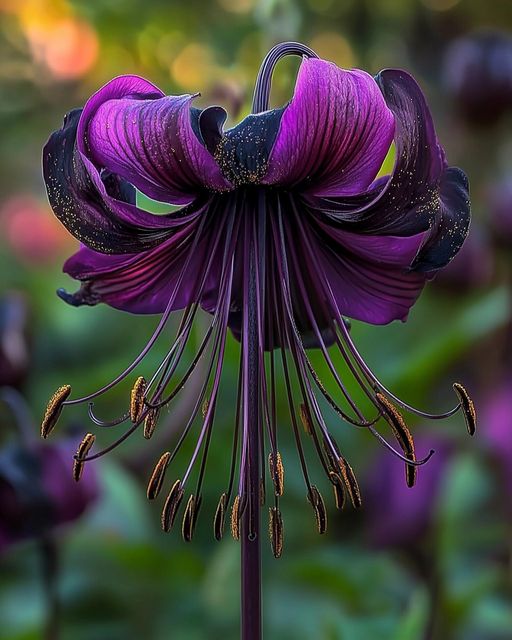
The fruit’s appearance and structure suggest an adaptation for animal dispersal, likely by birds or small mammals attracted to the colorful, fleshy fruits. This method of seed dispersal helps the plant colonize new areas and maintain genetic diversity within populations.
Cultural Significance: The Black Bat Flower in Human Imagination
The Black Bat Flower’s unique appearance has captured human imagination for centuries, weaving its way into folklore, traditional medicine, and modern pop culture. Its dark beauty and mysterious nature have made it a symbol of the unknown, the supernatural, and the transformative power of nature.
Myths and Legends: The Black Bat Flower in Folklore
Across various cultures, the Black Bat Flower has inspired a rich tapestry of myths and legends. Its bat-like appearance and nocturnal associations have often linked it to the realm of the supernatural:
- Southeast Asian Folklore: In parts of Thailand and Malaysia, the Black Bat Flower is sometimes associated with spirits of the forest. Local legends speak of the plant as a manifestation of nature spirits, with some believing that picking the flower without proper respect could bring misfortune.
- Chinese Mythology: In certain Chinese traditions, the Black Bat Flower is seen as a symbol of longevity and transformation. Its ability to thrive in dark, challenging environments is viewed as a metaphor for resilience and adaptability.
- Western Gothic Traditions: Although not native to Europe or the Americas, the Black Bat Flower has been embraced by gothic subcultures as a symbol of darkness and mystery. Its incorporation into gothic gardens and artwork speaks to its powerful visual impact and otherworldly associations.
These diverse cultural interpretations highlight the plant’s ability to spark imagination and inspire reverence for the natural world’s more unusual creations.
Traditional Medicine: Healing Properties of the Black Bat Flower
Beyond its symbolic significance, the Black Bat Flower has a history of use in traditional medicine systems, particularly in its native Southeast Asia:
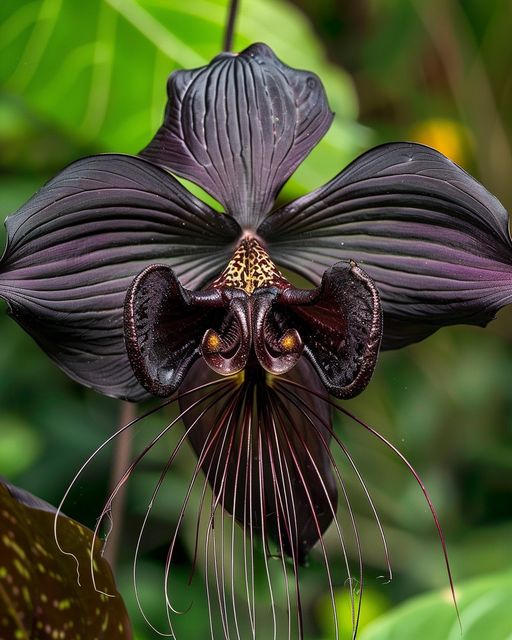
- Anti-inflammatory Properties: In traditional Vietnamese medicine, extracts from the plant’s rhizomes have been used to treat inflammation and swelling.
- Pain Relief: Some indigenous communities in Thailand have used preparations from the Black Bat Flower to alleviate various types of pain, including headaches and menstrual cramps.
- Digestive Aid: In parts of southern China, tea made from the plant’s leaves is believed to aid digestion and relieve stomach discomfort.
Cultivation Challenges: Growing the Black Bat Flower
Cultivating the Black Bat Flower is a endeavor that requires patience, dedication, and a deep understanding of the plant’s specific needs. Its reputation as a challenging species to grow has only added to its allure among plant enthusiasts and botanical gardens. Let’s explore the intricacies of Black Bat Flower cultivation and the obstacles that growers face.
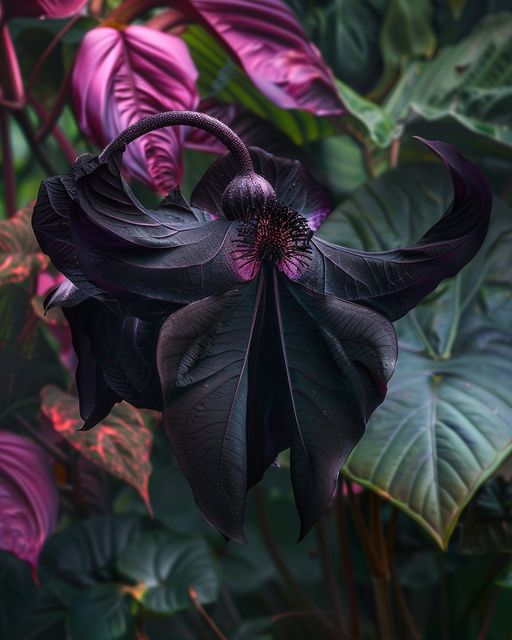
Soil and Nutrition: The Foundation of Health
The Black Bat Flower has specific soil requirements that can be challenging to meet:
- Well-draining Soil: The plant is susceptible to root rot, so a well-draining soil mix is crucial. A combination of peat moss, perlite, and orchid bark often works well.
- Slightly Acidic pH: The ideal soil pH for Black Bat Flowers ranges from 5.5 to 6.5. Maintaining this pH level requires regular monitoring and adjustment.
- Rich in Organic Matter: In its natural habitat, the plant grows in soil rich in decomposing plant material. Replicating this requires regular addition of organic compost or slow-release organic fertilizers.
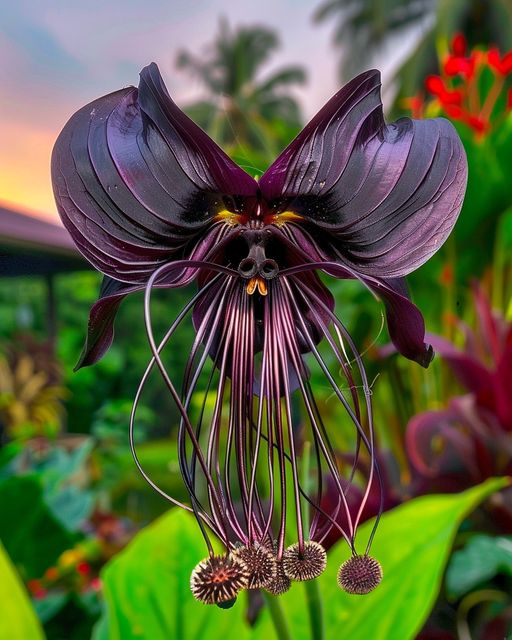
Balancing these soil requirements while avoiding overwatering can be a delicate process, requiring careful observation and adjustment.
Pest and Disease Management: Vigilance is Key
While the Black Bat Flower is not particularly susceptible to pests, its high humidity requirements can create conditions favorable for certain problems:
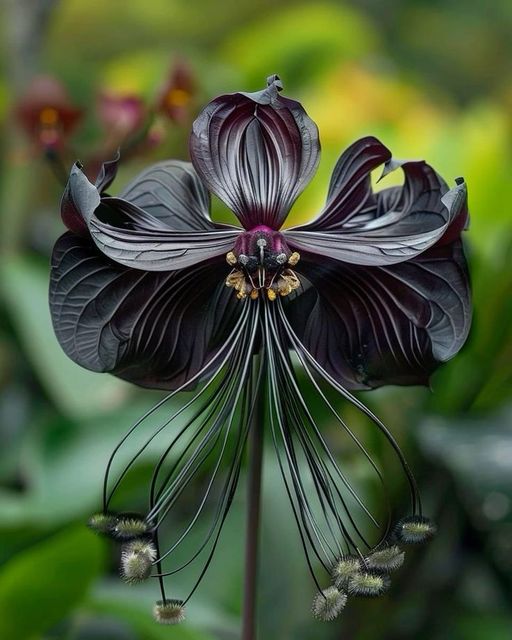
- Fungal Issues: The humid environment can promote the growth of various fungi, including those that cause root rot. Proper air circulation and careful watering practices are essential to prevent these issues.
- Mealybugs and Scale Insects: These pests can occasionally infest Black Bat Flowers, particularly in greenhouse settings. Early detection and treatment are crucial to prevent widespread infestation.
- Nutrient Deficiencies: The plant’s specific nutritional needs can sometimes lead to deficiencies, manifesting as yellowing leaves or stunted growth. Regular, balanced fertilization is necessary to prevent these issues.
